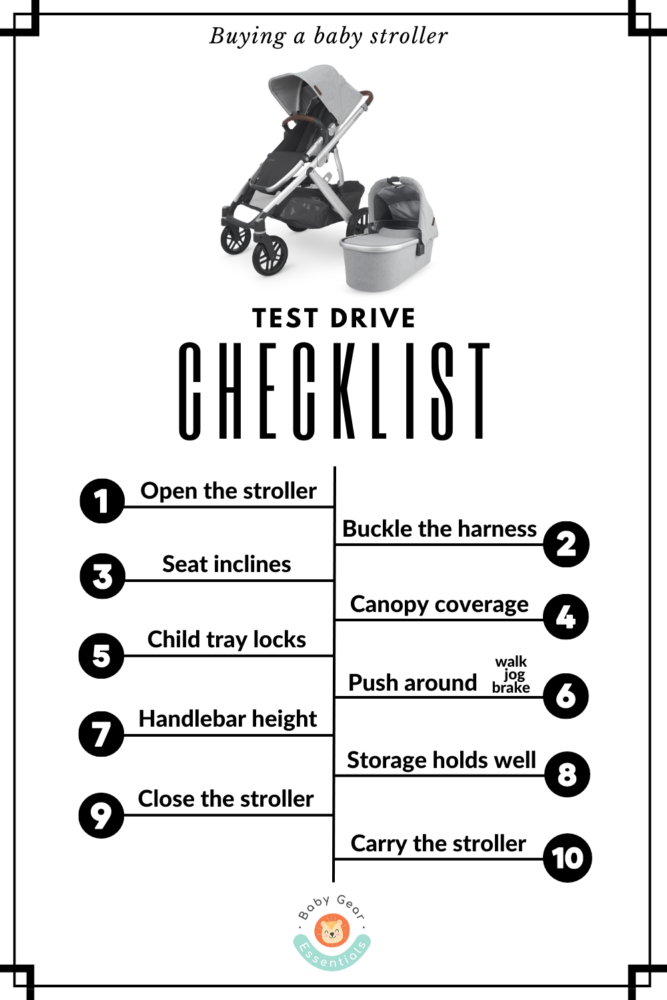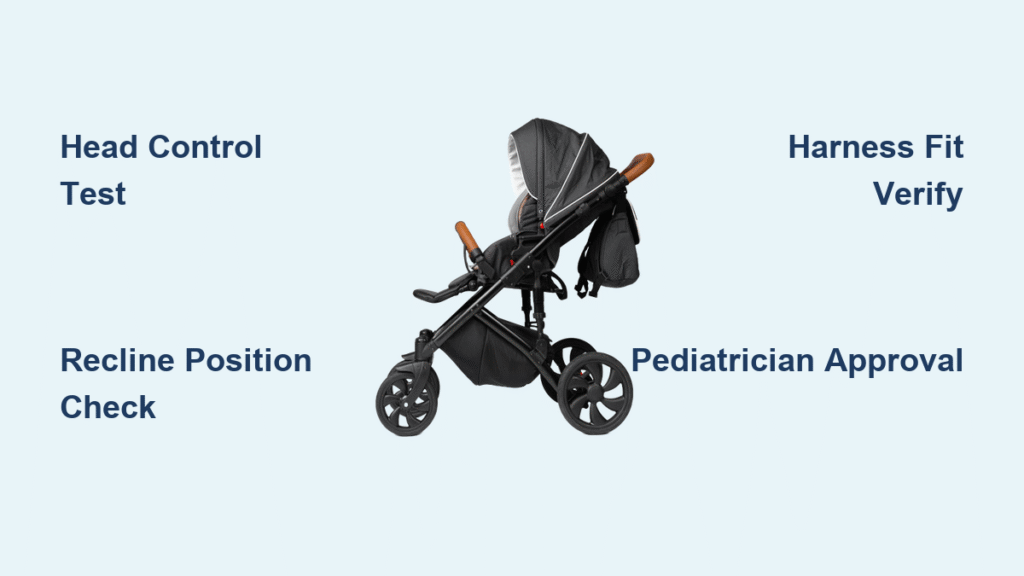That first neighborhood stroll with your newborn should feel joyful, not anxiety-inducing. Yet many parents freeze when unfolding their stroller: Is my baby’s neck strong enough? Could this position block their airway? The truth is, when can baby use stroller depends entirely on developmental milestones—not calendar dates. While some infants handle upright seating by five months, others need eight months of muscle development before safely riding in a standard seat. This guide cuts through the confusion with evidence-based readiness tests, stroller type comparisons, and critical safety checks used by pediatric physical therapists.
Your baby’s airway and spine development dictate stroller readiness far more than age alone. Newborns lack the neck strength to prevent chin-to-chest positioning, which can obstruct breathing in anything but a flat surface. By understanding the specific physical markers below, you’ll confidently know exactly when baby can use stroller seats without risking safety.
Head and Neck Control: The 3–4 Month Safety Threshold
Your baby must demonstrate consistent head stability before attempting any reclined stroller position. Until three months, their underdeveloped neck muscles can’t maintain an open airway when tilted upright—even for brief walks. The critical milestone? Holding their head steady while you gently tip them side-to-side without chin-to-chest collapse.
Perform this quick test before transitioning:
– Sit baby on your lap, supporting their ribcage
– Tilt slowly left, then right (no more than 20 degrees)
– Look for a visible gap between chin and chest
– Reject if head wobbles or bobs when relaxed
Most babies pass this test by four months, but true stability—needed for safe stroller rides—typically emerges closer to six months. If your infant’s head lolls forward during tummy time or when pulled to sit, they’re not ready. Premature babies may need additional weeks; always consult your pediatrician for personalized clearance.
Stroller Types Matched to Developmental Stages

Newborn to 3 Months: Absolute Flat Positioning Only
During the first 12 weeks, babies require 170–180 degree horizontal positioning. Upright or even semi-reclined seats risk airway obstruction due to immature neck control. Three configurations meet this critical need:
Bassinet strollers provide certified overnight sleep surfaces with full spinal alignment. Look for models with breathable mesh sides and large canopies.
Car seat adapters convert your stroller frame to accept infant carriers, maintaining the recline angle designed for newborn safety.
Fully-reclined seats (with newborn inserts) work if they achieve true lie-flat positioning—verify with a level app. Never use standard stroller seats in “recline” mode for newborns; most still create dangerous 30–45 degree angles.
3–6 Months: The Gradual Recline Transition
Between three and six months, babies develop enough neck strength for angled seating but still need head support. This stage demands strollers with multi-position recline (120–150 degrees) and removable infant inserts. Key features to prioritize:
- Parent-facing configuration for bonding and monitoring
- Adjustable calf support as legs grow
- 5-point harness with padded shoulder straps
- Suspension for uneven terrain
Critical warning: Never force this transition. If your four-month-old slumps into a “C” shape or shows chin-to-chest contact, revert to bassinet mode. The American Academy of Pediatrics explicitly prohibits non-reclining seats before four months due to suffocation risks during sleep.
6+ Months: Standard Seat Readiness Confirmed
Six months is the earliest potential transition point—not a guarantee. Your baby must demonstrate:
– Consistent head control during 10-minute walks
– Ability to sit unassisted on the floor for 60+ seconds
– No medical complications affecting muscle tone
– Pediatrician approval (especially for preemies)
Once ready, standard stroller seats offer multi-position recline (110–140 degrees) for naps and forward-facing exploration. Never use jogging strollers before eight months—even if milestones are met—due to jarring motion that strains developing spines.
Safety Tests That Determine When Baby Can Use Stroller
The 5-Minute Readiness Assessment
Before every transition, conduct this hands-on evaluation:
Physical check:
– Can baby maintain head position while you gently rock the stroller?
– Does their spine stay straight without slumping?
– Is there zero chin-to-chest contact at your target recline angle?
– Do they push up strongly during tummy time?
Equipment verification:
– Frame locks engage with audible clicks
– Brake holds on a 5% incline
– Harness straps fit snugly (two-finger test at shoulders)
– Zero pinch points near folding mechanisms
If baby fusses excessively or turns blue during testing, postpone the transition. Airway safety always trumps convenience.
Manufacturer Guidelines vs. Medical Reality
While most stroller brands state “6 months+” for standard seats, this is a safety buffer—not a biological milestone. The CPSC’s 2014 safety rule mandates:
– Lie-flat capability for birth use
– Harness strength to withstand 50 lbs of force
– Automatic frame locks to prevent collapse
Always cross-check your stroller’s printed weight/height limits (usually on the frame). Never exceed these, even if your baby seems ready.
Avoiding Critical Transition Mistakes

Age-Only Decisions Cause 73% of Stroller Injuries
Fixating on calendar age ignores developmental variation. Red flags signaling premature transition include:
– Head lolling during walks (indicates airway risk)
– Persistent “C-shaped” slumping (strains spine)
– Frequent startle reflexes causing imbalance
– Color changes or snoring (signs of obstruction)
One study found 68% of parents transitioned babies to upright seats before passing head control tests—leading to emergency room visits for breathing distress. Trust milestones, not months.
Dangerous Equipment Shortcuts
These common “hacks” create serious hazards:
– Jogging strollers for newborns: Lack neck support + jostling = spinal injury risk
– Aftermarket head supports: Often block harness function or create strangulation points
– Extended upright naps: Pediatricians warn against sleep in seated positions past 20 minutes
Only use accessories approved by your stroller’s manufacturer. If it wasn’t included in the box, it’s not safe.
Your Final Readiness Checklist Before First Upright Ride

Before that milestone walk, confirm:
Baby’s readiness:
– Passes head control test consistently for 3+ days
– Sits unassisted for 60+ seconds on solid ground
– Shows curiosity about surroundings (tracks objects)
– Zero medical concerns flagged by pediatrician
Stroller verification:
– Seat reclines to 110–140 degrees for initial use
– 5-point harness fits snugly without slack
– Parent-facing mode selected for monitoring
– Backup carrier packed for sudden naps
First-ride protocol:
– Start with 10-minute walks on smooth pavement
– Monitor breathing and posture every 2 minutes
– Keep walks under 30 minutes initially
– Have car seat adapter ready for regression
Your baby’s journey to stroller independence hinges on physical readiness—not arbitrary dates. By prioritizing head control tests, matching stroller configurations to developmental stages, and rejecting age-only assumptions, you’ll prevent airway risks while embracing newfound mobility. Remember: If your six-month-old still can’t hold their head steady during tummy time, they’re not ready for upright seating. Always consult your pediatrician for premature babies or developmental concerns. When you finally see your infant’s eyes light up at passing dogs and trees from their stroller seat, you’ll know you waited for the right moment—not just the right age.





